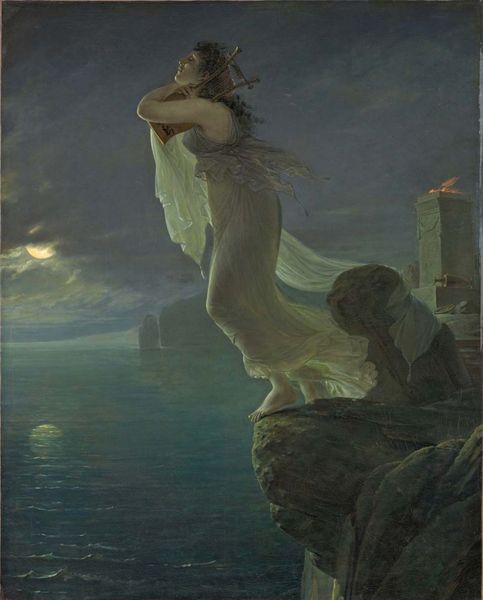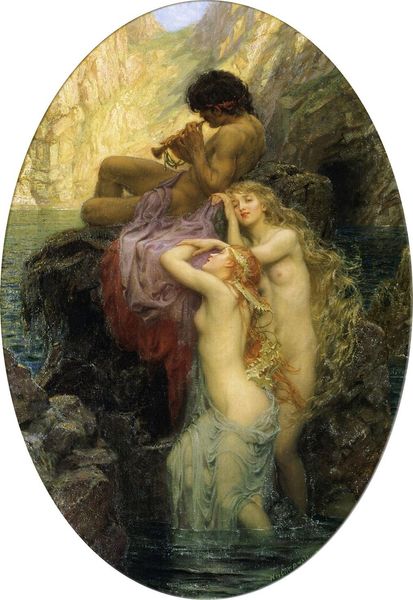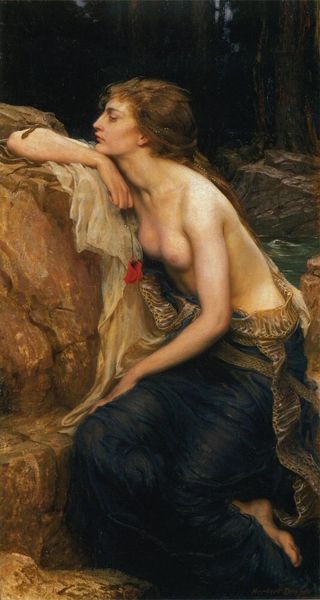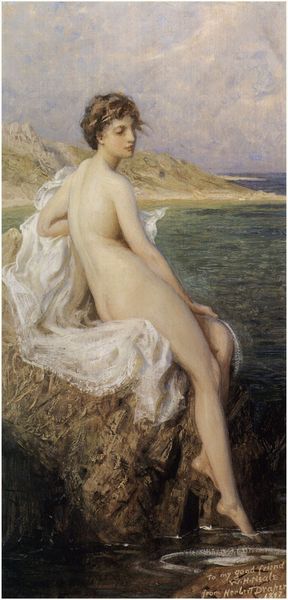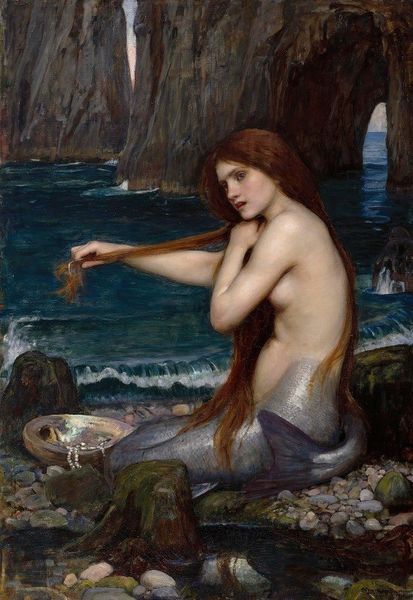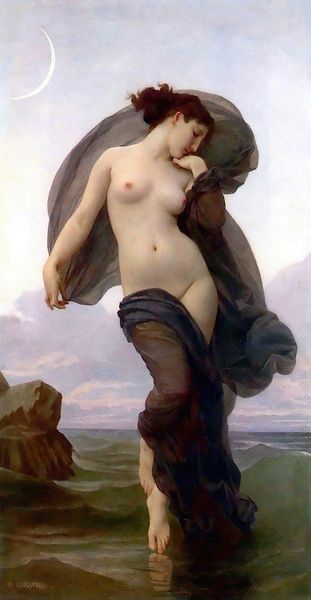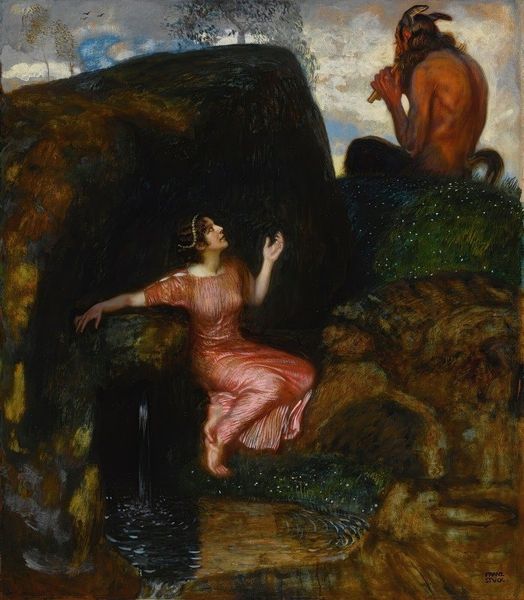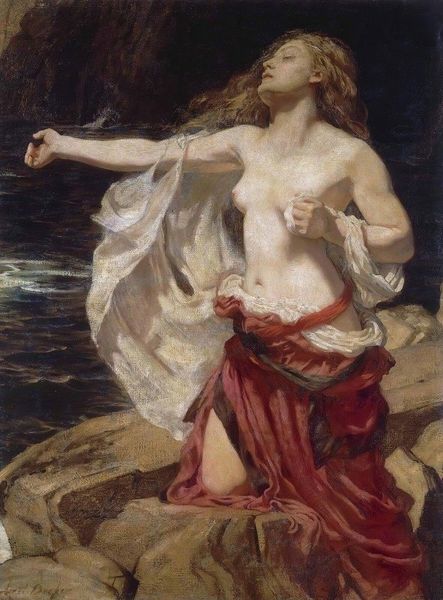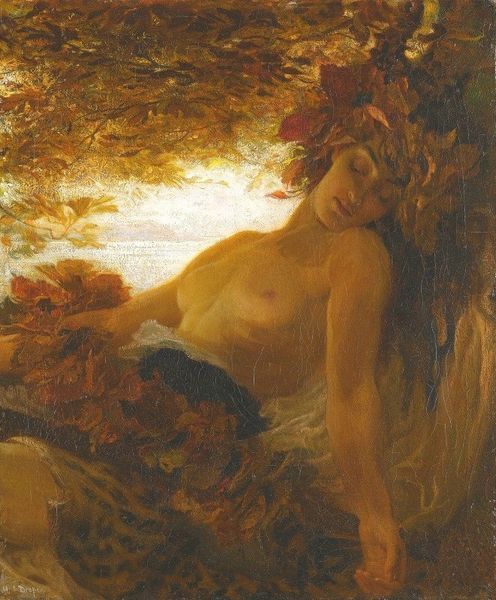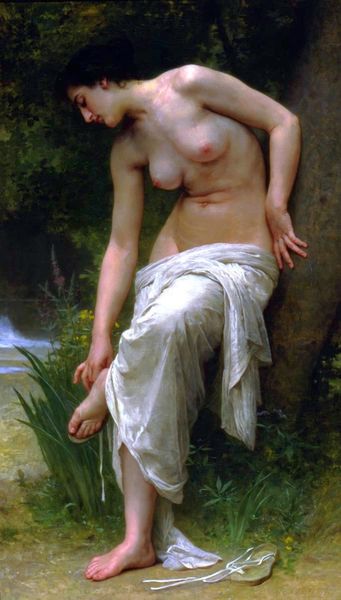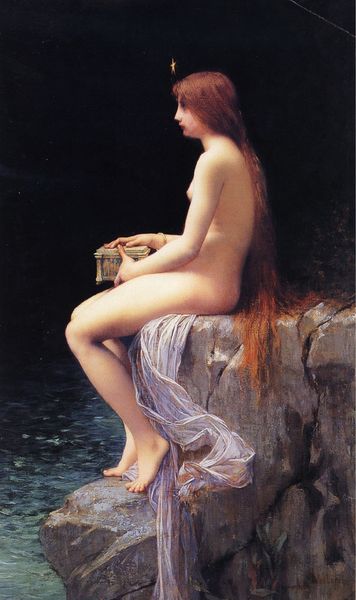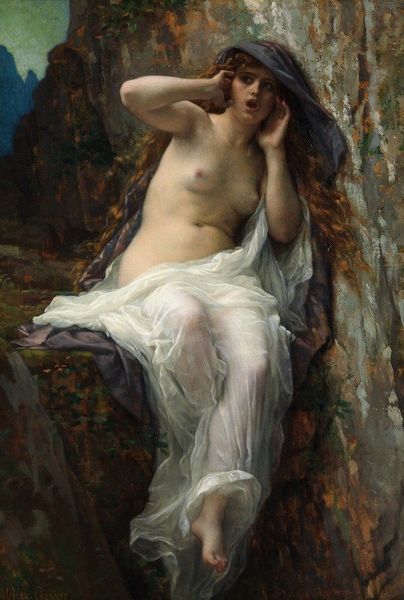
Copyright: Public Domain: Artvee
Frederic Leighton made this oil painting, Perseus and Andromeda, in England, sometime in the late nineteenth century. Leighton turned to classical mythology for his subject matter. Here, we see the princess Andromeda chained to a rock as a sacrifice to a sea monster, with Perseus flying to her rescue. This painting reflects the aesthetic values of the time, where academic art and classical subjects were highly esteemed. It also speaks to the broader social and cultural context of Victorian England, marked by its imperial ambitions and patriarchal social structures. The image portrays Andromeda in a vulnerable state, relying on a male hero for rescue. This kind of imagery was typical in British art institutions, which tended to reinforce traditional gender roles and power dynamics. The art historian might consult exhibition records, period reviews, and biographical information about Leighton to understand this painting more fully. It's crucial to view art like this through a critical lens, acknowledging how it both reflected and shaped the values of its time.
Comments
No comments
Be the first to comment and join the conversation on the ultimate creative platform.
